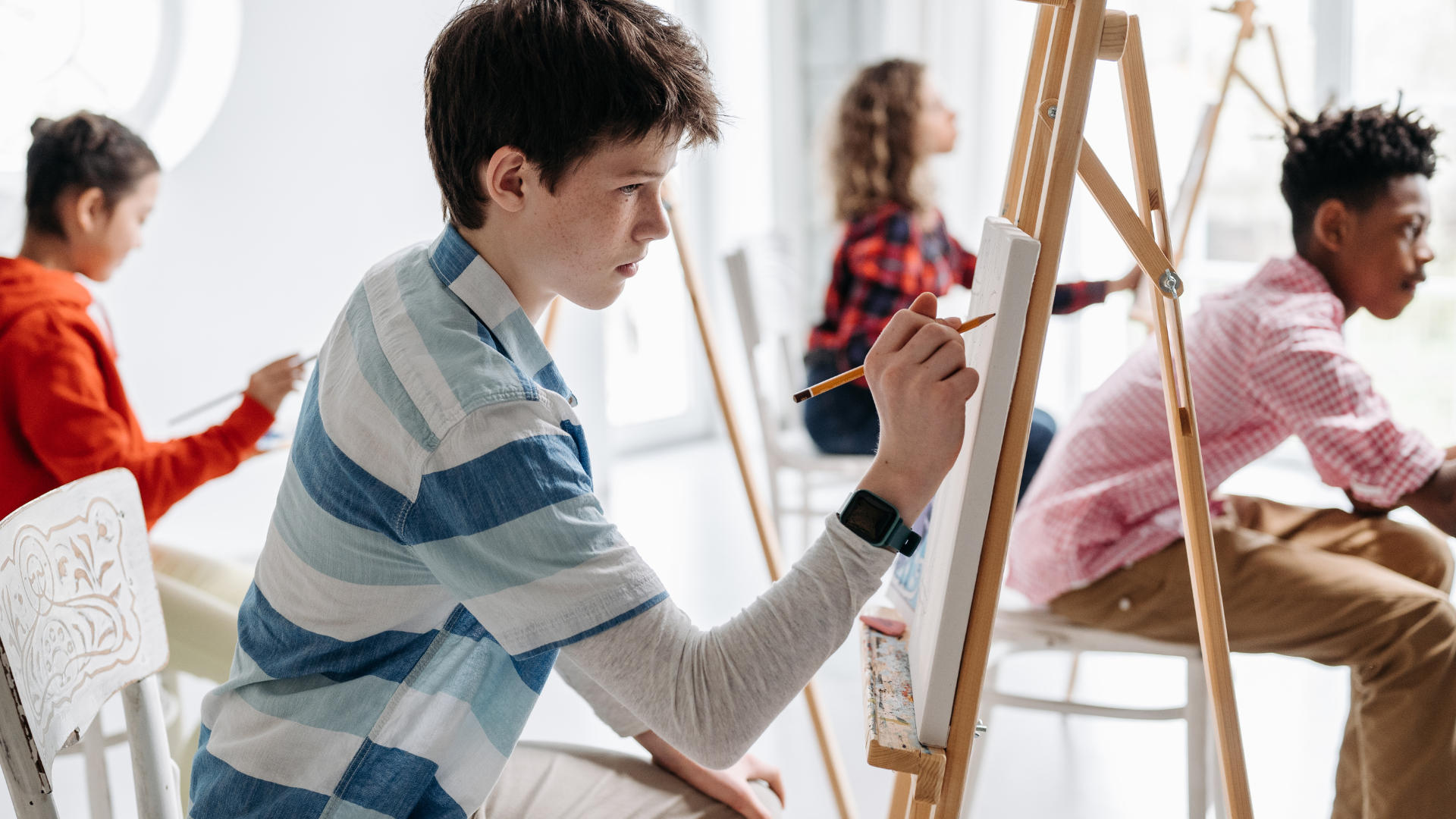Are you an aspiring artist looking to unlock your creativity and make beautiful art pieces? If yes, then look no further! In this blog post, we’ll be taking a look at seven simple steps you can take to get started on your creative journey. From finding inspiration and cultivating an artistic workspace to fine-tuning your technique and learning from others – this guide will help you make art in no time. So read on and let’s get started!
Introduction to Art & Creativity
Art and creativity can seem like daunting concepts, but they don’t have to be! Everyone has the potential to be creative, it just takes a little practice. In this section, we’ll cover the basics of what art and creativity are and some simple ways to get started making your own art.
What is art? Art is often defined as the expression or application of human creative skill and imagination. It can take many forms, including painting, sculpture, photography, and music. The important thing to remember is that there is no single definition of what constitutes art. It is whatever you make of it!
What is creativity? Creativity is the ability to come up with new ideas or solutions. It involves thinking outside the box and looking at things in new ways. Like art, there is no one-size-fits-all definition of creativity. It simply refers to the act of creating something new.
Creativity is a trait that is often nurtured at a very young age. Environments such as home or education centers can encourage imaginative play and artistic expression. These environments provide children with the tools and freedom to explore their creative potential. This is why it can be important as parents to not only create an environment at home that allows children to play around but also find appropriate schooling, even as early as preschool, that focuses on creative activities in their curriculum. If you are looking for a preschool for your kids, consider searching online for “Preschool Near me in Hampstead, MD“, or in a nearby location, and allow the young minds to flourish.
Now that we’ve got a better understanding of what art and creativity are, let’s talk about how you can get started making your own art.
Find Your Inspiration
The first step to making art is finding your inspiration. This can be anything that sparks your creativity, such as a beautiful landscape, a work of art you admire, or even just a simple still-life scene. Once you have found your inspiration, it’s time to start sketching out your idea. Try to capture the essence of what you’re seeing in your mind’s eye, and don’t worry about making it perfect. The goal at this stage is simply to get your ideas down on paper so you can start bringing them to life.
Gather Your Supplies
Now that you have an idea of what you want to make, it’s time to gather your supplies. If you’re not sure what supplies you need, a quick Google search or a trip to your local craft store should do the trick. Once you have your supplies, it’s time to get started!
Set Up a Creative Space
Assuming you have the materials you need (see Step 1), the next step is to set up a space where you can be creative. It doesn’t have to be anything fancy – a corner of your bedroom or living room will do just fine. But it should be a space that is equipped with work desks and chairs (find multiple options for these at office monster) dedicated to your art. Consider the atmosphere that inspires you to be creative. You can also add some plants, artwork, or any other items that will bring a sense of comfort and peace. In case you prefer a bright and airy space, try to open up the curtains and windows. On the other hand, if you like a cozy feel, light some candles or add warm lights. For this, it’s a good idea to enlist the help of a handyman in Horseshoe Bay (or your local area) to install light fixtures and any special electrical sockets needed.
Choose a Medium
The best way to start making art is to find a medium that you’re comfortable with. There are many different mediums to choose from, so it’s important to experiment until you find one that suits your style.
Some popular mediums include:
- Pencil and paper
- Charcoal
- Paint
- Sculpting materials like clay or wood
- Photography
- Digital art
Once you’ve chosen a medium, it’s time to start exploring and experimenting with it. See what kinds of effects you can create, and try out different techniques. The more you practice, the better you’ll become at using your chosen medium.
Experiment with Different Techniques
There are a variety of different techniques you can experiment with when making art. Some common techniques include painting, drawing, sculpting, and photography. You can also experiment with mixed media, which is a combination of two or more mediums. For example, you could create a painting using both watercolours and acrylics. Or you could create a sculpture using both clay and wood. The possibilities are endless!
When experimenting with different techniques, it’s essential to keep an open mind and not be afraid to try something new. It’s also essential to have patience and not get discouraged if something doesn’t work out the way you planned. Remember that making art is all about having fun and expressing yourself!
Take Criticism Constructively
It’s inevitable that at some point you will receive criticism for your work. It can be difficult to take, but it’s important to remember that not all criticism is bad. In fact, constructive criticism can be a valuable tool for helping you improve your work. When taking criticism, try to keep an open mind and consider the source. If the person critiquing your work is someone whose opinion you value, then their feedback is likely to be helpful. However, if the critic is someone whose opinion you don’t care about, or who is simply being negative, then it’s probably best to ignore them.
When evaluating criticism, ask yourself if there is any truth to it. If there is, then use it as an opportunity to learn and improve. If not, then simply let it go and move on. Remember that ultimately you are the only one who can decide what is best for your art. So trust your own instincts and judgment above all else.
Have Fun and Enjoy the Process!
Now that you’ve followed all of the steps in this guide, it’s time to have some fun and enjoy the process of making art! Let your creativity flow and don’t be afraid to experiment with different techniques and mediums.
The more you create, the better you’ll become at unlocking your creativity. So get out there and start making some beautiful art! Making art can be an incredibly rewarding and fulfilling experience, no matter your level of skill or experience. We hope you have found this beginner’s guide to unlocking creativity in seven simple steps useful.
Remember that the best way to unlock your creative potential is to experiment with different materials and techniques until you find what works for you. With a little bit of practice, we are sure that soon enough you will be creating masterpieces like a pro!

